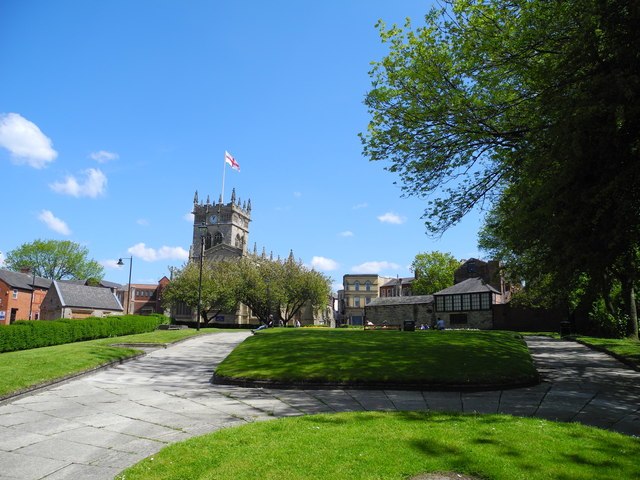Wigan is a town in Greater Manchester, England, on the River Douglas. The town is midway between the two cities of Manchester, 16 miles (25.7 km) to the south-east, and Liverpool, 17 miles (27 km) to the south-west. Bolton lies 10 miles (16 km) to the north-east and Warrington 12 miles (19 km) to the south. It is the largest settlement in the Metropolitan Borough of Wigan and is its administrative centre. The town has a population of 107,732 and the wider borough of 330,714. Wigan is part of the historic county of Lancashire.
Market Place, Wigan
All Saints' Church was substantially rebuilt between 1845 and 1850.
Wigan Lane monument
Trencherfield Mill is an example of one of Wigan's mills being converted for modern use.
Greater Manchester is a ceremonial county in North West England. It borders Lancashire to the north, Derbyshire and West Yorkshire to the east, Cheshire to the south, and Merseyside to the west. Its largest settlement is the city of Manchester.
Image: Tower Blocks over Knott Mill, geograph 6866152 by David Dixon
Image: Peel Monument August 2022 (1)
Image: Church Gardens, Wigan geograph.org.uk 3578326
Former weavers' cottages in Wardle. An increase in domestic cloth production, and textile manufacture during the Industrial Revolution is attributed to a population boom in the area.








